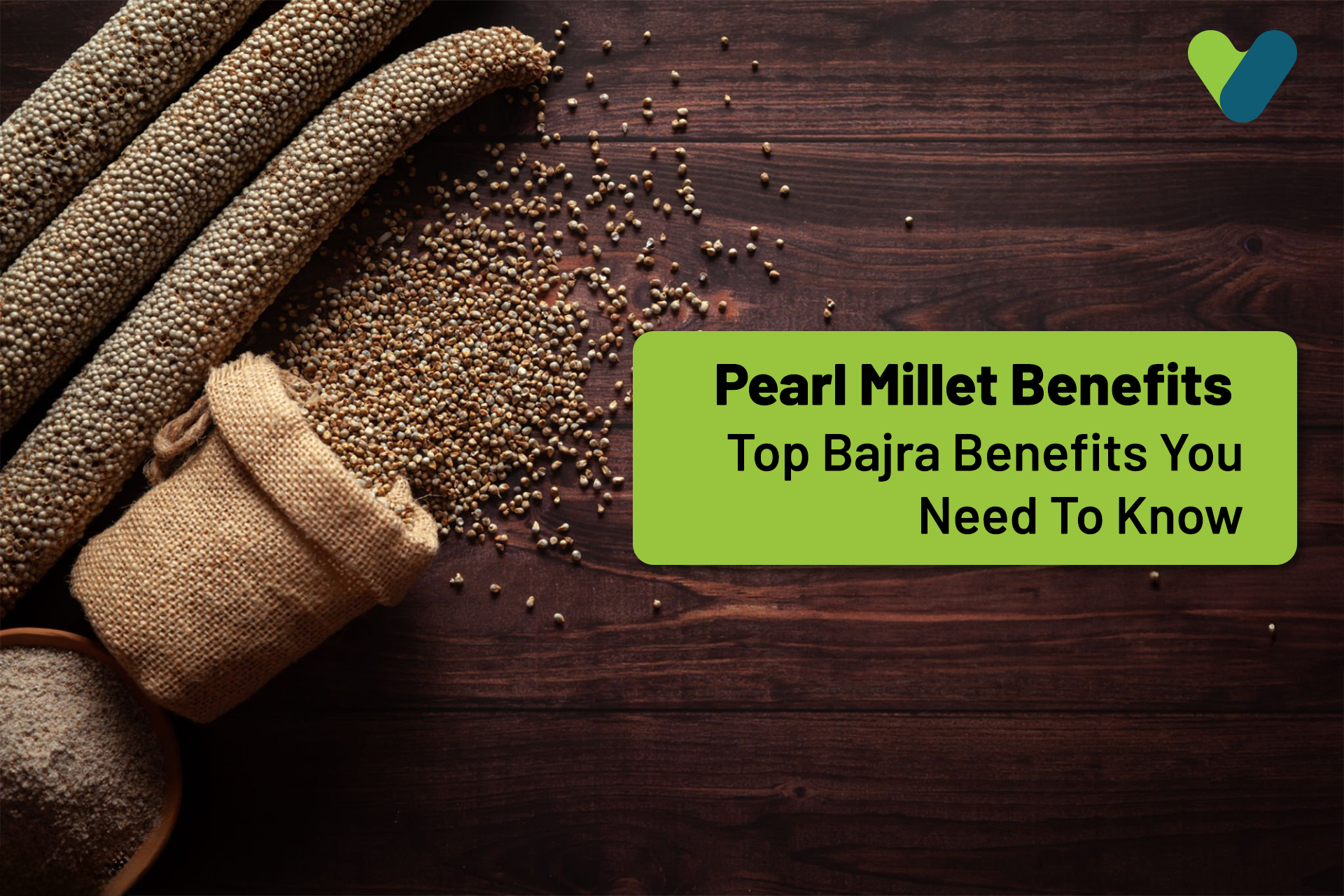Are you allergic to wheat and looking for a substitute? Try bajra or pearl millet and get relief from celiac disease and other gluten allergies. So, what is millet and what are the types of millets? Millet or bajra is also known as Pennisetum Glaucum crop. These are the edible seeds of the pearl millet plants, and derive their name from that plant. Some of the popular types of millets or bajra are Foxtail, Kodo millet, Finger Millet, and Fonio.
Let us help you understand all about the benefits of eating millets, millet uses, and which millet is good for weight loss?
Nutritional Value of Bajra (Pearl Millets)
Before we throw light on pearl millet benefits, first have a look at the nutrition in bajra. Listed below is the nutrient value found in 100 grams of bajra for your reference:- Calories: 350
- Carbohydrates: 65 g
- Water: 12 g
- Fat: 5 g
- Minerals: 2 g
- Fibre: 1 g
- Phosphorus: 240 mg
- Calcium: 40 mg
- Iron: 8 mg
15 Incredible Bajra Benefits For Health
So, let us begin by acquainting you with the top 15 amazing bajra millet benefits:- A Rich Source of Protein: Eggs are not the only best source of protein. One of the primary bajra benefits for vegetarians is that they can rely on the protein content found in bajra. Include bajra in your diet and you can easily fetch an adequate amount of protein for your body.
- A Rich Source of Fibre: Looking for a fibre rich food item that can replace wheat? Try bajra for this reason. One of the major bajra atta benefits is that it is rich in insoluble fibre and keeps you full for longer.
- Loaded with Antioxidants: And protein and fibre, bajra is also a good source of antioxidants. So those who have bajra as a part of their daily meal can fight off various infections easily.
- A Healthy Gluten-Free Option: If you are allergic to gluten food items like wheat, go for bajra. Yes, pearl millet or bajra is a healthier and safer option for those who want to replace wheat in their diet. It’s gluten free.
- Pearl Millet is Good for Weight Watchers: Tired of trying several remedies for weight loss? Try bajra to lose weight. This low calorie food alternative to wheat can help you lose weight by reducing calorie intake. It’s rich in fibre which keeps you full longer and prevents weight gain.
- Reduces Insulin Resistance in Diabetics: Diabetics can consider bajra as a superfood that can control their blood sugar levels. It’s a grain that’s loaded with magnesium which helps to reduce insulin resistance in the body.
- Eat Bajra to Relieve Constipation: Another surprising benefit of eating bajra is that it helps to relieve constipation. It is an easy-to-digest food containing insoluble fibre. Due to this insoluble fibre, it is good for your digestive system.
- Good for Vision and Eye Health: The list of pearl millet benefits doesn’t end here. Millet powder or bajra flour helps to improve your vision. Bajra is rich in zinc. Zinc is a nutrient that helps to produce Vitamin A which is a vitamin for healthy eyes.
- Bajra Powder Helps to Reduce Cholesterol: Are you suffering from high cholesterol? Know how the benefits of bajra flour can help you! Loaded with fibre, bajra is a miraculous remedy to regulate your cholesterol. It helps to reduce LDL and increase HDL or good cholesterol. The best option
- Millet Powder is Good for Heart: Being rich in magnesium, bajra is a superfood for your heart. Daily consumption of bajra helps in the proper functioning of your heart and regulates your heartbeat. Were you aware of these bajra benefits?
- Regulates Blood Pressure: Eating bajra every day will help regulate your blood pressure. This happens due to the presence of potassium in bajra or pearl millet. People with hypertension or high blood pressure must include bajra in their daily diet.
- Bajra Flour Prevents Anaemia: Bajra flour is also very effective in preventing anemia due to its rich iron content. Eating a roti made of bajra, besan, and jowar flour is an effective measure to keep anemia at bay.
- Boosts Body’s Endurance: If you want to enhance your athletic performance then you must binge on bajra rotis. Bajra or pearl millet is rich in protein, fibre and other nutrients that help to increase endurance and overall energy.
- Makes Your Bones Stronger: Another benefit of eating bajra is that it makes your bones stronger. It’s rich in phosphorus a nutrient for bone health. Eat a bajra roti with some ghee and keep your bones healthy and strong.
- Millet Powder is Good for Skin: Eating millet powder is also good for your skin. It is loaded with zinc content that helps to repair the damaged skin cells and prevents aging. Moreover, with less fat content, bajra helps to prevent acne.
Bajra Side Effects
Now, that you have read about the surprising benefits of eating bajra, check out some of the bajra side effects too.- It may cause kidney stones
- Bajra consumption may lead to malabsorption syndrome
- It may worsen thyroid dysfunction
- Eating bajra in excess may lead to digestive disorders


